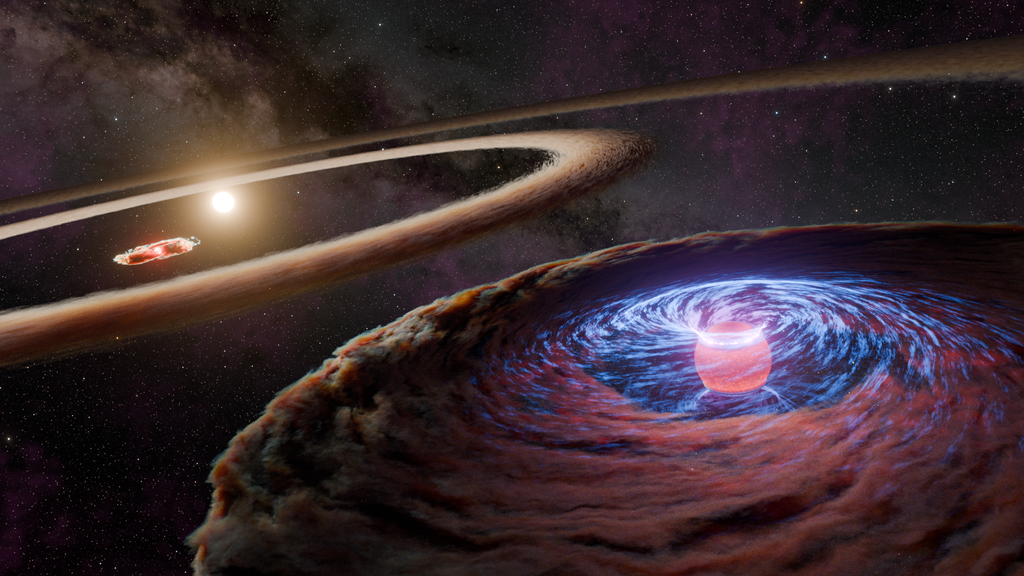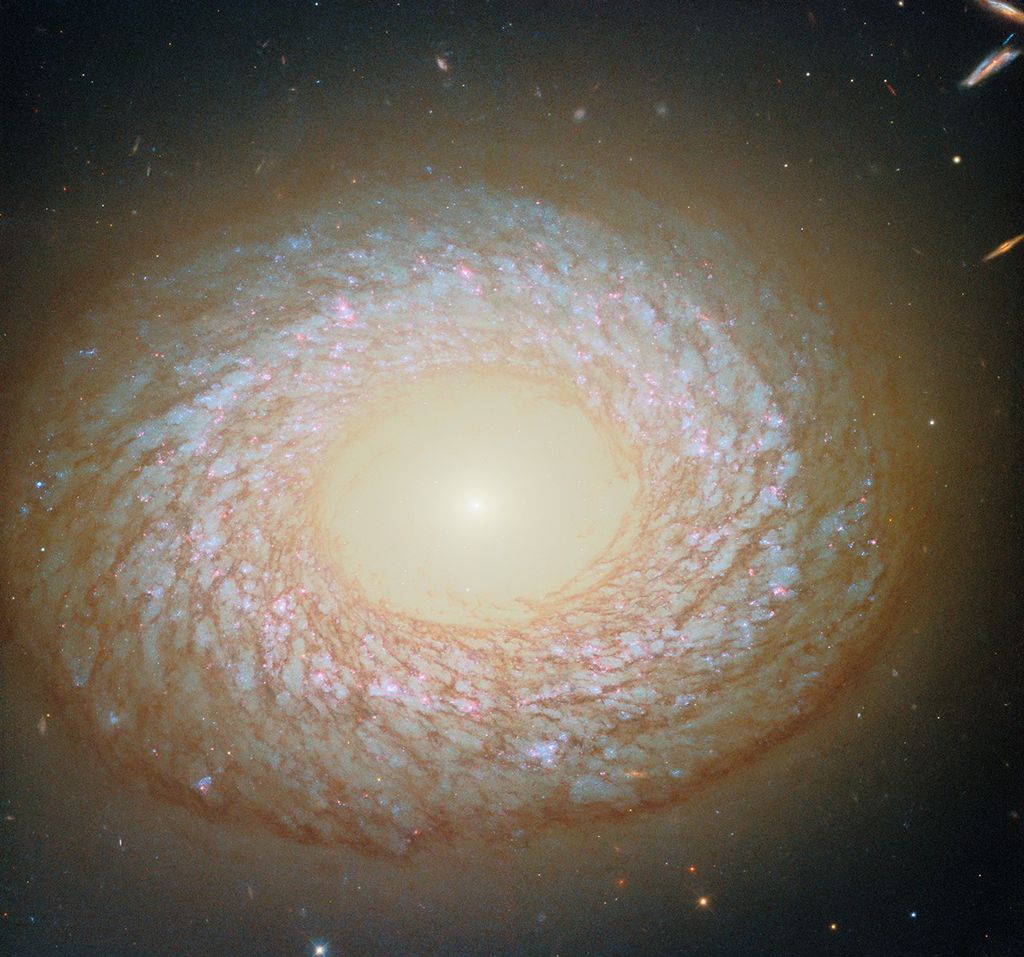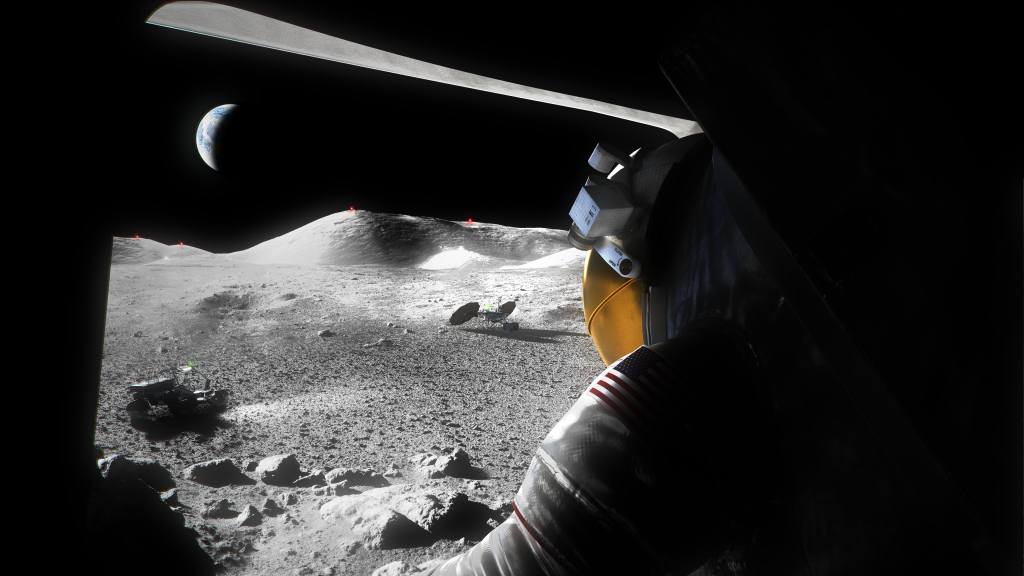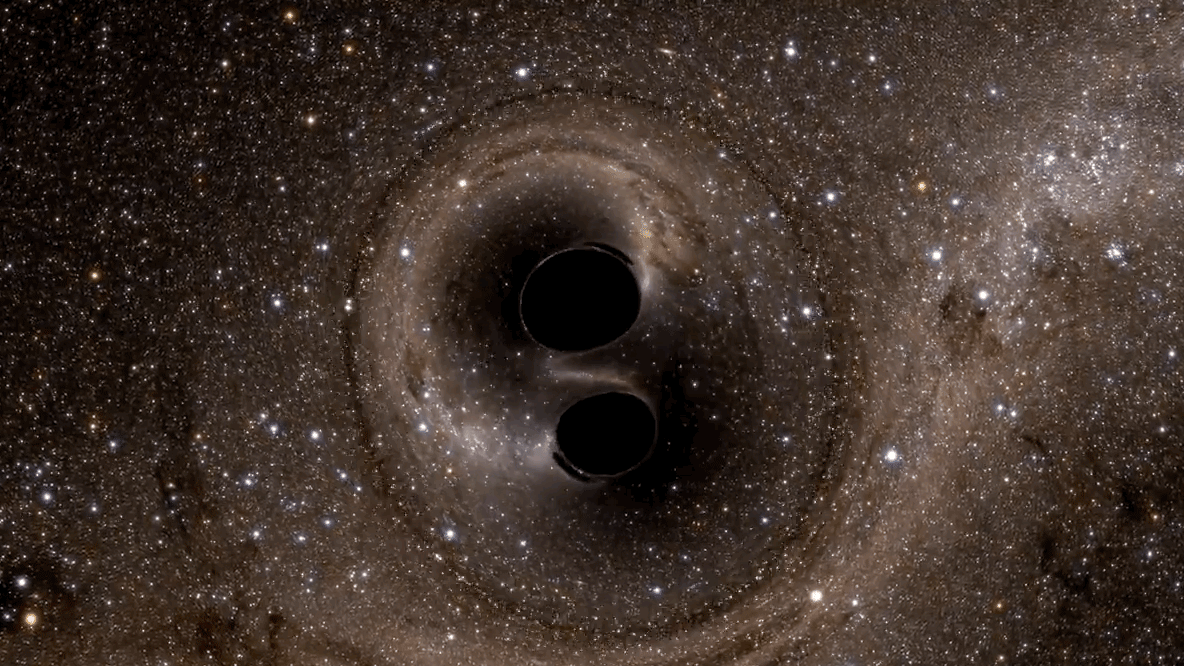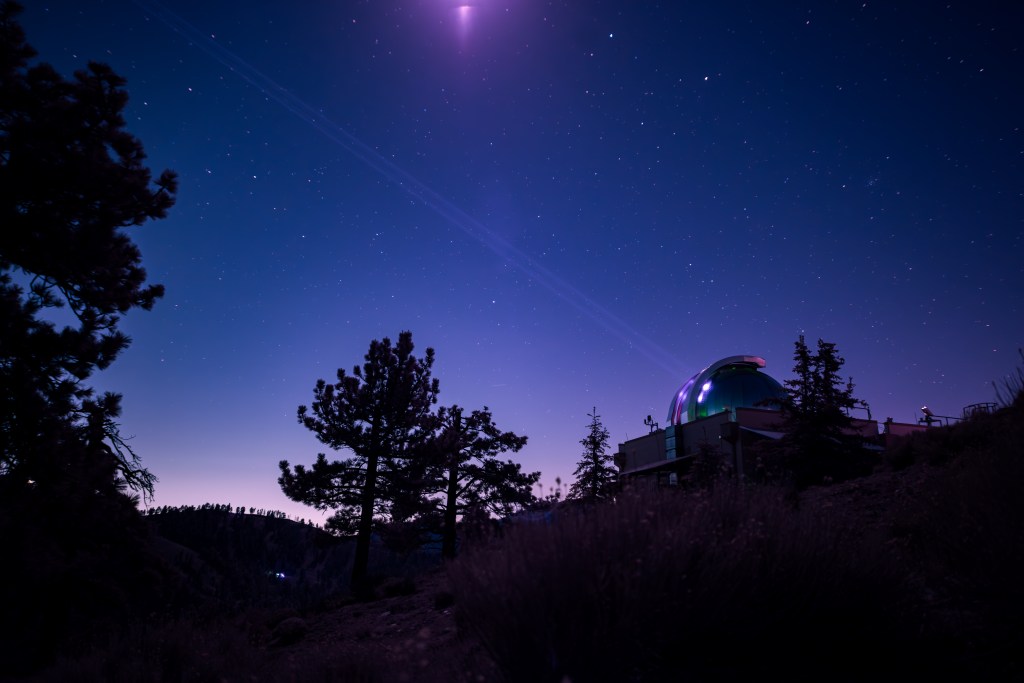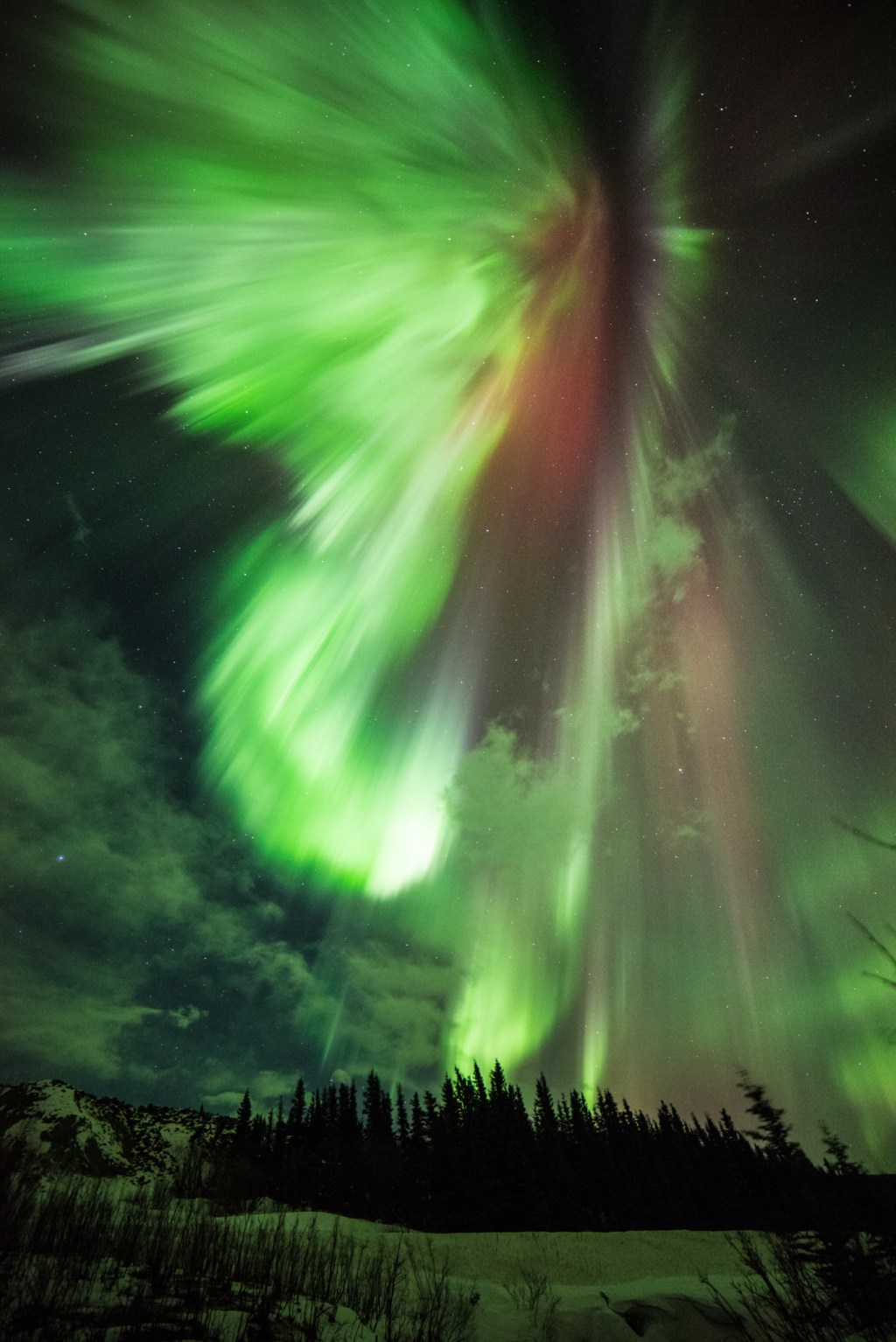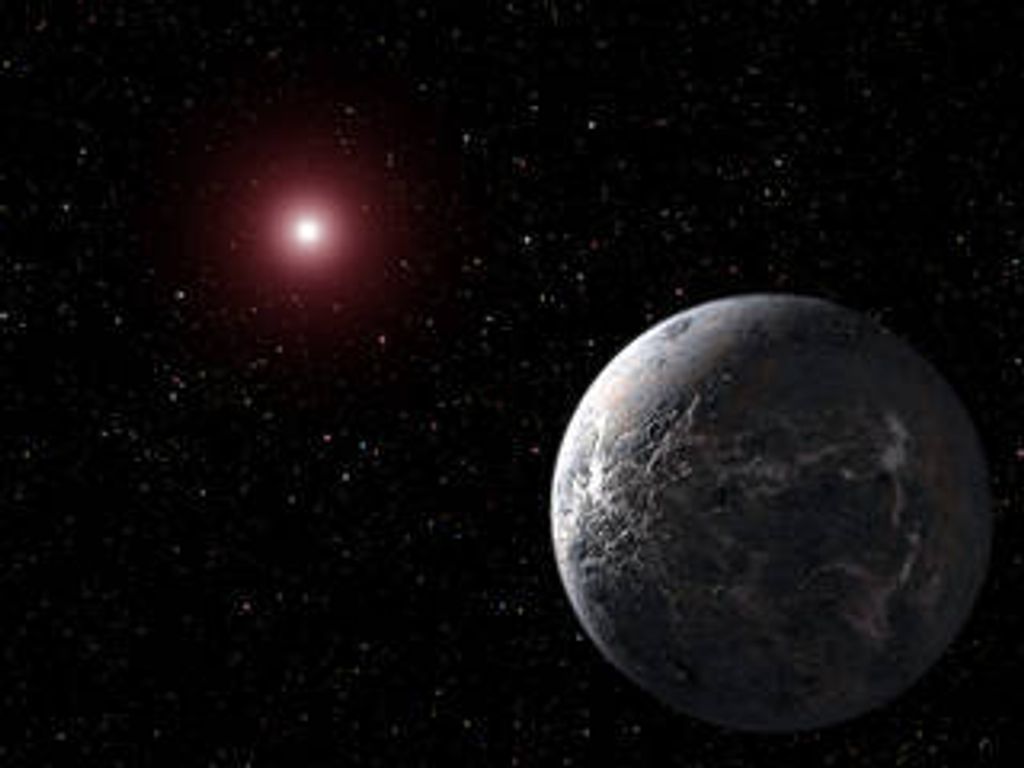Astronomers using NASA's Spitzer and Hubble Space Telescopes and other ground-based observatories have discovered a failed star, less than one-hundredth the mass of the Sun, possibly in the process of forming a solar system. The object, called Cha 110913-773444, is one of the smallest known brown dwarfs to harbor what appears to be a planet-forming disk of rocky and gaseous debris, which one day might form planets. A team led by Kevin Luhman of Penn State University will discuss this finding in the Dec. 10 issue of The Astrophysical Journal Letters.
This artist's conception shows the relative size of a hypothetical solar system with a planetary-mass brown dwarf as its "sun" (above) compared to the solar system around 55 Cancri, which is a star like our Sun (below). Cha 110913-773444 contains only about eight times the mass of Jupiter and lies 500 light-years away in the Chamaeleon constellation. Astronomers speculate that the disk surrounding Cha 110913-773444 might have enough mass to make a small gas giant and a few Earth-sized rocky planets.

